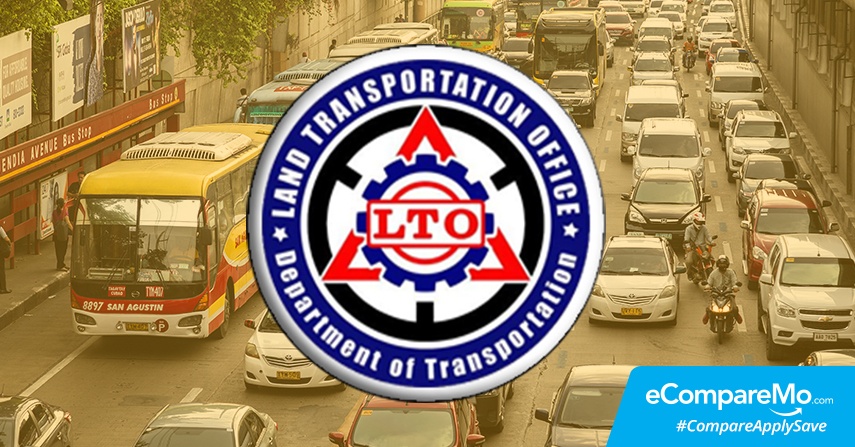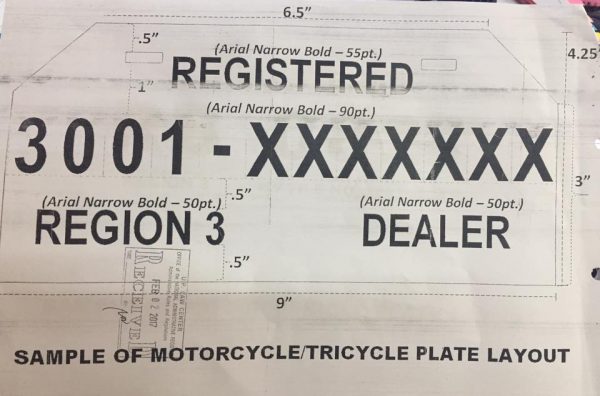What You Need To Know About LTO’s ‘No OR/CR, No Travel’ Policy
4 min readJust as February gave us the Valentine’s blues, it seems like the Land Transportation Office (LTO) is here to make motorists go red hot—in rage.
A number of car owners raised their pitchforks after the government agency announced the format for the standardization of temporary license plates. The design, which went in effect last February 15, must be issued by all accredited car and motorcycle dealers and must strictly follow the template prescribed by the LTO.

Upon its implementation, there has been a crackdown on drivers who are either not following the format for conduction-based license plates or new cars with no plates at all.
But one issue gave birth to another: The no OR/CR, no travel policy. Here’s what happened.
The ideal scenario
Despite the delay in the issuance of license plates, a person who buys a car should expect his vehicle to be fully available from the dealership in seven days. This means that the car has to be prepped and ready to go, with all the necessary documents are already secured.
Some of the documents needed to consider the vehicle fully registered are the following:
- Sales invoice, issued by the dealer
- Motor Vehicle Clearance Certificate, issued by the Philippine National Police and applied for by the dealer
- Certificate of Stock Reported, issued by the car manufacturer
- Certificate of Insurance Cover, applied for by the dealership especially for new cars
Since there have been long-standing delays with the issuance of license plates on vehicles, the LTO allowed motorists to use temporary license plates based on the Conduction Sticker of the vehicle.
However, this led to the confusion that the vehicle can freely use public roads with nothing but the Conduction Sticker. But the LTO clarified that the purpose of the Conduction Sticker is to allow the cars for road testing and delivery, not to act as a substitute for full registration.
To address this, the agency released a standardized format of temporary licenses, which should be used on all new vehicles starting February 15. The new layout also includes space for the Motor Vehicle (MV) File Number, which is only available once the car has been fully registered and encoded in LTO’s database.
The big crackdown
There has been a series of apprehensions on violators since the controversial LTO memorandum took effect. Top Gear Philippines says in a report that motorists without the new Conduction Sticker-based plates are pulled over to make sure that they are properly registered.
This is because of the fact that some dealerships have been releasing vehicles to buyers without securing all the documents mentioned.
“LTO Pasig Branch officer-in-charge Nida San Buenaventura says that dealers are slow to provide the necessary documentation needed for a car to be fully registered,†wrote Drei Laurel on Top Gear Philippines. “To complete the registration process, dealers must submit a sales invoice from the regional office, a stock report from the central office and PNP clearance.†This lays the blame on the inefficiency of dealers.
Meanwhile, CarGuide says that ideally, the official receipt should be available within seven days and that it is, in fact, possible to complete the processing in a day. However, the website reported that “there have been some reports of backlog at the LTO stretching up to 90 days.â€
Suspended, with a few buts and ifs
In a strange twist of events, CarGuide recently reported that the Land Transportation Office (LTO) has suspended the implementation of the policy for three months, or 90 days starting February 24, after a meeting with automotive dealers.
The yet-to-be formalized memorandum, the website said, allows dealers to deliver units to a buyer’s place of residence, but prohibits the owner from using the vehicle on public roads. Under the agreement, dealers may ask the buyer to sign an “oath of undertaking” that frees the dealer from any liability and penalties if the owner is apprehended for violating the said prohibition..
One thing’s for sure: It’s the car buyers who are in the losing end of the whole fiasco.
What to do
Since the LTO has started the strict implementation of the new license plates, here are the things you can do to stay out of this mess:
-
- If your vehicle was purchased before February 15 and you are apprehended, just present your OR/CR and you’ll be good to go. To avoid inconvenience, get a Conduction Sticker-based plate that follows the LTO standard. Samples below:
- If your vehicle was purchased after February 15, just keep your OR/CR and other documents with you at all times. Also, make sure your temporary license plate follows the prescribed format by the LTO.
- If your vehicle was purchased recently and you still don’t have the OR/CR, do not use your vehicle or you risk apprehension and fines. Since you don’t have the MV File Number—even if you use the standardized temp plate format—your car is still considered unregistered and can be pulled over. The fine for driving an unregistered motor vehicle is P10,000 for the owner and P1,000 for the driver.
At the end of the day, your Conduction Sticker doesn’t mean your car is already registered. If you have issues about your car’s OR/CR, talk to your dealer so they can sort things out. Also, make sure your car follows the LTO-mandated plate format to avoid hassles in the future.


